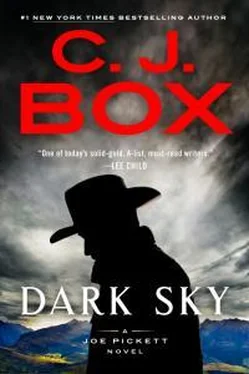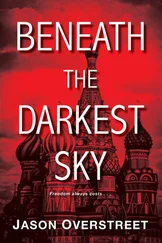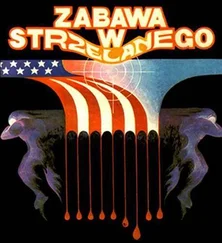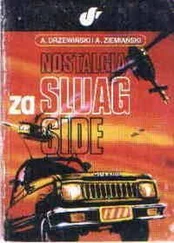His .454 Casull was coiled in its holster on the cracked leather seat next to him.
It was the perfect vehicle, he thought, for making a personal call on a falcon smuggler and rearranging the man’s face and his future plans in the area.
—
Sheridan’s research had helped narrow down the focus of their investigation, and both Liv and Marybeth Pickett had chipped in with their computer skills. For the first time, Nate realized the advantage Joe had possessed these many years. His secret weapon was Marybeth and her ability to find information from both public and private sources. It had taken only a few hours for the three of them combing through records and websites to narrow down his target.
Simply put, there were very few prominent falcon smugglers in the world. Although extremely lucrative, because the primarily Middle Eastern buyers were willing to pay tens of thousands of dollars for wild-caught falcons, the skills, equipment, contacts, and subterfuge required to make it all work quickly weeded out amateurs looking for a fast score. Nate knew this because he’d once been involved in the illegal trade himself, but that had been years before. He had no idea who was still active.
As far as Sheridan, Marybeth, and Liv could determine, there were only three big-time falcon smugglers whose names popped up time and time again on the watch lists of the National Wildlife Crime Unit in the UK, the U.S. Fish and Wildlife Service, and the Rhodesian Ornithological Society, as well as on the website of the Convention on International Trade in Endangered Species. They’d also searched through falconry blogs with threads and comments about missing birds and speculation on who might have taken them.
Frank Szofran, from South Africa, was being held by Welsh authorities after being arrested for taking peregrine eggs from cliff ledges in the Rhondda Valley in southern Wales. His travel records revealed that he’d made dozens of trips to Dubai, presumably where he sold the eggs to Middle Eastern falconers. A rental cottage he’d used was filled with incubators and other equipment designed to keep the eggs alive.
Keith Geis, from Canada, had been arrested the previous year at O’Hare International Airport in Chicago after a bathroom janitor found thin shards of eggshells in a bathroom sink and identified the man who had just exited the lavatory in a hurry. Geis had been pulled out of line in the departure lounge and a search of his body revealed that he had fourteen peregrine and two red-tailed hawk eggs stuffed in thick socks and taped to his torso to keep them warm. Thirteen of the sixteen eggs were shown to be viable. The eggs, along with a ticket to the United Arab Emirates, had been confiscated and Geis was charged with federal crimes. If sold individually, the eggs were estimated to be worth over $650,000 on the illicit Arab falconry market. As far as they could tell, Geis was in custody awaiting trial.
It was possible, Nate thought, that he was up against a falcon thief who was so clever and so diabolical that he’d never been suspected or named. That seemed unlikely, though. The falconry world was small and specialized, and although practitioners often didn’t all like each other, they knew each other. For someone to glide through that world without raising a red flag seemed unrealistic.
Which left Axel Soledad, a thirty-five-year-old Utahan and former special operator who had recently moved to Colorado. Soledad was suspected of not only stealing falcon eggs but sending raptor chicks to international buyers via FedEx and private courier. Soledad was a political activist. Background searches revealed that he purportedly used much of the money he made smuggling birds to finance growing antifa movements in Denver, Portland, and Seattle. A warrant was out for his arrest for the beating of a photographer during a Denver antifa rally, and there was a photo attached.
The image showed Axel Soledad to be tall, rangy, and lean with a hawklike nose and piercing dark eyes. He had a shaved head with black stubble on his face. His military background suggested he might have contacts in the target countries. He looked like trouble, Nate thought.
“He looks like you ,” Liv observed while cradling Kestrel. “Same stare. Same intensity.”
“And he’s a former special operator,” Sheridan had added. “What is it with you guys?”
“There is no you guys ,” Nate had said, offended by the implication.
Colorado shared a border with Wyoming, and north-south traffic was significant. Coloradans, with their distinctive green-and-white mountain license plates, were ubiquitous throughout Wyoming and wouldn’t draw a second look. Intuitively, Nate knew they’d identified the man who had looted his bluffs. The man who would pay for it in bruised flesh, broken bones, and possibly his life, if he got chippy.
—
So where is he?” Nate had asked.
He knew that successful falcon smuggling required certain resources. It couldn’t be done by an itinerant in a rental car. In addition to the climbing equipment and the bownet traps used to capture birds, a semipermanent place had to be secured with room, electricity, and most of all privacy. Eggs couldn’t be kept alive or young birds fed and housed for long in a motel room or vehicle without arousing suspicion. The smuggler would need to secure the young birds while he built his inventory. Falcons needed to be hooded, fed, and watered.
The captured birds could be held anywhere—an outbuilding, garage, workshop—as long as they were kept out of view from locals or passersby. Trying to figure out who might have recently rented such a space seemed all but impossible, the three of them decided.
But falcon food was a different story. Young raptors needed to eat prey on a schedule, as Nate could attest. Buyers didn’t like it if the wild falcons they wanted to purchase had subsisted on commercial feed. Rabbits, pigeons, ducks, grouse, and other wild species had to be available in quantity to keep the birds healthy. Nate spent more than half of his hours hunting and trapping to keep his Air Force maintained. Sheridan had taken on a big chunk of that burden.
And it was Sheridan who asked the question aloud that put Nate on the trail of Axel Soledad.
“If you just showed up in Saddlestring with a dozen hungry birds,” she asked, “where would you go to find food for all of them in a hurry?”
—
He’d taken Sheridan with him to town in the Yarak, Inc. van and parked it in front of Rex’s Taxidermy on Main Street. Nate had stayed in the van while Sheridan went inside to see Dusty Tuckness, the owner.
Tuckness was small, plump, odd, and very energetic. He’d purchased the shop from Matt Sandvick a few years before, and his obvious goal was not only to run the busiest taxidermy facility in a thriving hunting community, but to create a destination for visitors. He had a loading dock in the back for receiving big-game carcasses and a showroom in front with local mounts, as well as exotic animals that hunters had sent him from all over the country, including tigers, lions, and Cape buffalo.
Tuckness was preparing his shop to host a Chamber of Commerce social later that night. He wanted to show off the changes he’d made in the facility and urge locals to send tourists his way.
His newest and most lucrative venture was selling “prairie dog skin rugs” that looked like miniature versions of bearskin rugs and were meant to be used as place mats at the dinner table. The tanned rodent skin had all four paws splayed out and an intact head with beady plastic eyes and an open mouth to show its yellow teeth. Tuckness sold them in sets of four for two hundred dollars a set or individually for seventy-five. He didn’t care that most of the tourists who bought them intended them as gag gifts.
Читать дальше












